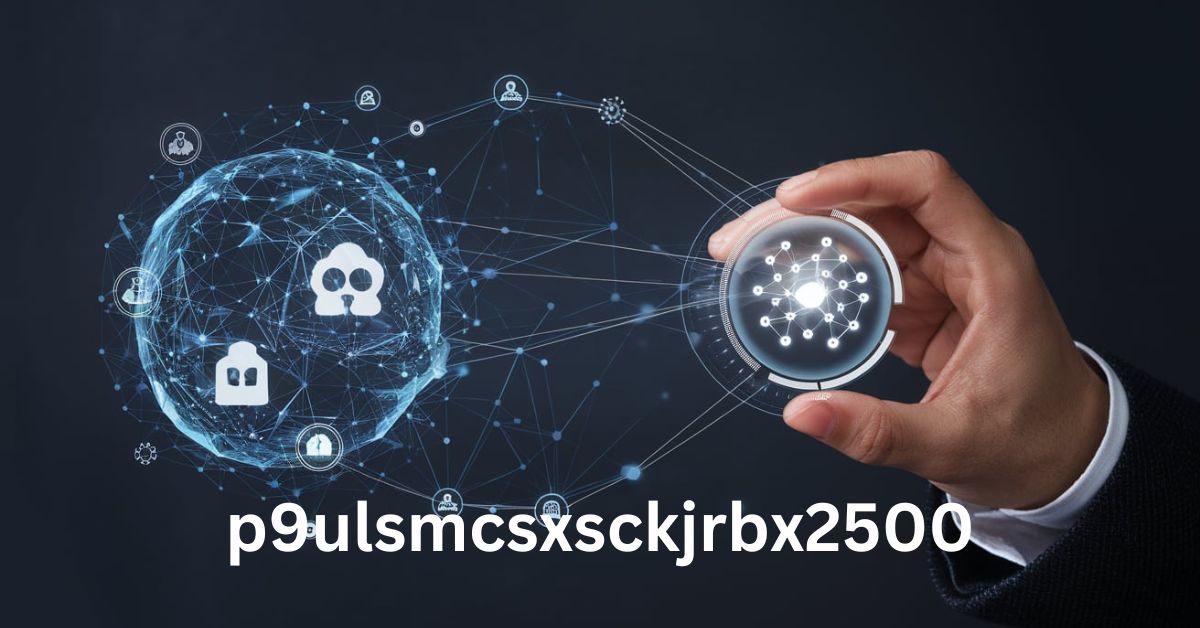Understanding p9ulsmcsxsckjrbx2500: A Deep Dive into Cutting-Edge Technologies and Methodologies

In the ever-evolving landscape of technology and methodologies, p9ulsmcsxsckjrbx2500 stands out as a term representing a set of transformative innovations. While it may sound complex, this term encapsulates a range of technologies and approaches that are driving significant changes across various sectors. This article aims to provide an in-depth analysis of p9ulsmcsxsckjrbx2500, explaining its core concepts, applications, and potential impacts on different industries. By the end of this comprehensive guide, you’ll have a clear understanding of what p9ulsmcsxsckjrbx2500 is, how it works, and why it matters.
What Is p9ulsmcsxsckjrbx2500?
At its core, p9ulsmcsxsckjrbx2500 refers to a collection of advanced technologies and methodologies designed to bring about substantial changes in various sectors. This term represents the convergence of several innovations that, together, have the potential to revolutionize how we approach problems and opportunities in fields such as healthcare, finance, manufacturing, and more.
Core Technologies Behind p9ulsmcsxsckjrbx2500
- Advanced Data Analytics: One of the foundational elements of p9ulsmcsxsckjrbx2500 is the use of advanced data analytics. This technology allows for the processing and interpretation of vast amounts of data to uncover insights and trends that were previously hidden.
- Artificial Intelligence (AI) and Machine Learning (ML): AI and ML are integral to p9ulsmcsxsckjrbx2500, providing the capability to automate complex tasks, make predictions, and enhance decision-making processes.
- Blockchain Technology: Blockchain plays a crucial role in ensuring data integrity and security within p9ulsmcsxsckjrbx2500. It provides a decentralized and transparent way to record transactions and manage data.
- Internet of Things (IoT): IoT technology is another key component, enabling the connectivity and communication between various devices and systems. This interconnectivity is essential for the effective implementation of p9ulsmcsxsckjrbx2500.
- Cloud Computing: Cloud computing offers the infrastructure needed for the storage and processing of data, making it a fundamental element of p9ulsmcsxsckjrbx2500.
Applications of p9ulsmcsxsckjrbx2500
The applications of p9ulsmcsxsckjrbx2500 are vast and varied, impacting numerous industries. Here, we explore some of the most significant areas where these technologies are making a difference.
Healthcare
In healthcare, p9ulsmcsxsckjrbx2500 is revolutionizing patient care and management. Advanced data analytics and AI are being used to develop personalized treatment plans, predict patient outcomes, and improve diagnostic accuracy. IoT devices are enhancing remote monitoring capabilities, allowing for more proactive and preventative care.
Finance
The finance sector is benefiting from the implementation of p9ulsmcsxsckjrbx2500 in several ways. Blockchain technology is improving transaction transparency and security, while AI and ML algorithms are optimizing trading strategies and risk management. Advanced data analytics is also helping financial institutions better understand market trends and customer behavior.
Manufacturing
In manufacturing, p9ulsmcsxsckjrbx2500 is driving innovations such as smart factories and automated production lines. IoT technology enables real-time monitoring and control of machinery, while AI and ML optimize production processes and supply chain management. Data analytics is used to predict equipment maintenance needs and improve overall efficiency.
Retail
The retail industry is experiencing significant changes due to p9ulsmcsxsckjrbx2500. AI-driven recommendation systems enhance the customer shopping experience, while data analytics provides insights into consumer preferences and purchasing behavior. IoT technology is also improving inventory management and supply chain operations.
Benefits of p9ulsmcsxsckjrbx2500
The integration of p9ulsmcsxsckjrbx2500 technologies brings about numerous benefits, including:
- Increased Efficiency: Automation and advanced analytics streamline processes, reducing manual effort and increasing overall efficiency.
- Enhanced Accuracy: AI and machine learning improve the accuracy of predictions and decision-making, leading to better outcomes in various fields.
- Improved Security: Blockchain technology and advanced security protocols enhance data protection and integrity.
- Cost Savings: The optimization of processes and resource management leads to cost savings for organizations.
- Better Customer Experience: Personalized recommendations and improved services enhance the overall customer experience.
Challenges and Considerations
While p9ulsmcsxsckjrbx2500 offers numerous advantages, there are also challenges and considerations to keep in mind:
- Data Privacy: The collection and analysis of large amounts of data raise concerns about privacy and data security.
- Integration: Implementing these technologies can be complex and may require significant changes to existing systems.
- Cost: The initial investment in advanced technologies can be high, though the long-term benefits often outweigh the costs.
- Skill Gap: There may be a need for specialized skills and training to effectively utilize and manage these technologies.
Future Outlook
The future of p9ulsmcsxsckjrbx2500 looks promising, with ongoing advancements expected to further enhance its capabilities and applications. As technology continues to evolve, we can anticipate even greater innovations and improvements across various sectors.
Emerging Trends
- Enhanced AI Capabilities: Future developments in AI and machine learning will likely lead to even more sophisticated applications and solutions.
- Quantum Computing: The advent of quantum computing could revolutionize data processing and analytics, further expanding the possibilities of p9ulsmcsxsckjrbx2500.
- Integration of 5G: The integration of 5G technology will improve connectivity and enable more seamless communication between devices.
- Sustainability: There is a growing focus on developing technologies that promote sustainability and reduce environmental impact.
Related FAQs
1. What is p9ulsmcsxsckjrbx2500?
P9ulsmcsxsckjrbx2500 refers to a set of technologies and methodologies that drive significant changes across various sectors, including healthcare, finance, manufacturing, and retail. It encompasses advanced data analytics, AI, blockchain, IoT, and cloud computing.
2. How does p9ulsmcsxsckjrbx2500 impact healthcare?
In healthcare, p9ulsmcsxsckjrbx2500 improves patient care through personalized treatment plans, enhanced diagnostics, and remote monitoring capabilities.
3. What role does blockchain play in p9ulsmcsxsckjrbx2500?
Blockchain technology ensures data integrity and security by providing a decentralized and transparent way to record transactions and manage data.
4. What are the benefits of implementing p9ulsmcsxsckjrbx2500?
The benefits include increased efficiency, enhanced accuracy, improved security, cost savings, and a better customer experience.
5. What are some challenges associated with p9ulsmcsxsckjrbx2500?
Challenges include data privacy concerns, integration complexity, high initial costs, and the need for specialized skills and training.
6. What is the future outlook for p9ulsmcsxsckjrbx2500?
The future outlook includes enhanced AI capabilities, the advent of quantum computing, integration of 5G technology, and a focus on sustainability.
Conclusion
P9ulsmcsxsckjrbx2500 represents a powerful set of technologies and methodologies that are transforming various sectors. By understanding its core components, applications, benefits, and challenges, we gain insight into how these innovations are shaping the future. As technology continues to advance, p9ulsmcsxsckjrbx2500 will undoubtedly play a crucial role in driving progress and achieving new milestones across industries.










